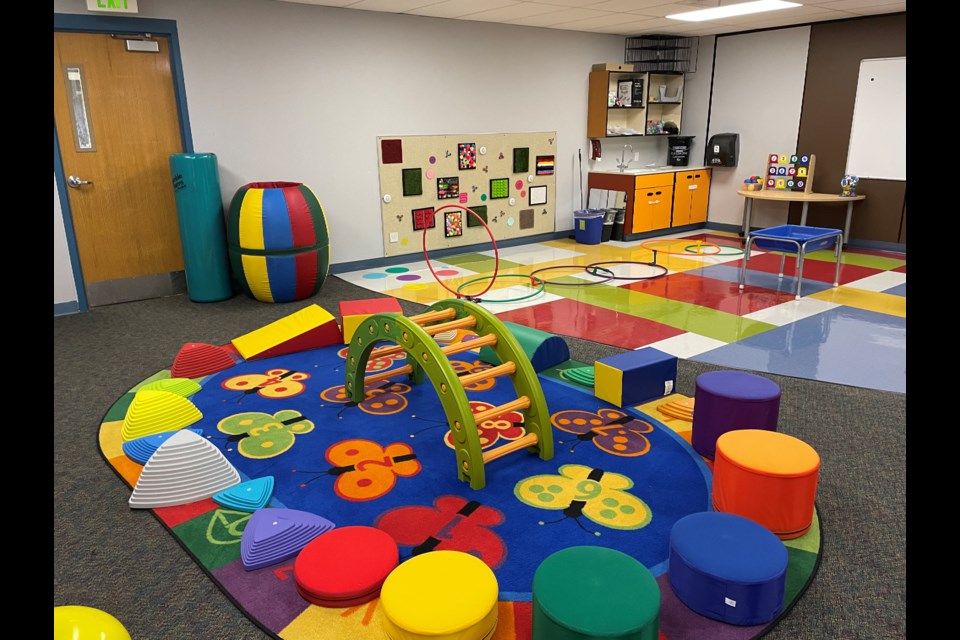More and more special education students across the St. Vrain Valley School district are now able to use sensory rooms to regulate their learning.
“Sensory rooms use sensory equipment to create a controlled sensory-focused environment. These environments allow sensory experiences to be individually tailored to meet the specific needs of an individual,” according to the National Autism Resources website. “Good sensory rooms are well structured so that the amount and intensity of a sensory experience can be easily controlled and monitored.”
In SVVSD, special education teachers from preschool on up are using sensory rooms so students can regulate their own behaviors and learn coping skills. An added benefit of sensory rooms is that students return to the classroom ready to learn.
In a study conducted by Grand Valley State University, researchers found that students were “56% more engaged in classroom activities post-sensory room intervention.”
“This is a widely used strategy to help students regulate and get ready for return to learning,” shared St. Vrain Valley Schools Director of Special Education Emily Scott. “Sometimes this looks like a dedicated classroom space, but can mean access within their very own classroom.”
Jess Harbison, a preschool teacher at Spark! Discovery Preschool works with only special education students. She integrates sensory room work into her daily lesson plan, working with students to find an activity that supports the child’s particular sensory needs as well as letting the student explore.
“When we go into the room we try to help them go into the areas of the room that serve that need,” Harbison said. “We try to teach them what their body needs in the moment …”
Although a part of the daily routine, Harbison strategically uses the sensory room to preempt classroom learning by going engaging students in sensory activities beforehand.
“It gets their bodies regulated because the research shows when they are regulated, their bodies are calm, they are better able to learn,” Harbison added. “My students are better able to engage in circle time.”
Circle time for Harbison’s preschool students is one of the hardest times of the day. At 3 years old, students are just learning those skills in general. However, Harbison attributes the time students spend in the sensory room with the extended amount of time she sees her preschool class sitting still and paying attention.
Coal Ridge and Sunset middle schools also have dedicated rooms to helping students regulate their bodies and emotions.
“The sensory room offers students a place to go to get regulated,” said special education teacher at Sunset Middle School, Laurie Rayhill. “It teaches them what they need to do to regroup and refocus, so they can be successful within the school building.”
While some schools offer sensory room time to only special needs students, all students at Sunset have access to the room, although approximately 20 students use it through the week, according to a news release from SVVSD.
Students can find activities from gel tiles to kinetic sand to a lego wall. “There are tools to help students calm down and also to boost students up depending on how they feel upon their arrival,” the news release states.
“I love it because it gives me an opportunity to get to know the students,” said Rayhill. “Through the sensory room, we can take the temperature of the visiting students and see how they are doing overall.”
Coal Ridge Middle School takes a slightly different approach. Instead of a sensory room, it has a dedicated mindfulness room.
“ A sensory room is more for students who have specific sensory disorder issues. It targets more things that work on touch, feel, smell, and so on. Like weighted vests, quiet areas and things like that can help with specific sensory issues that may escalate behaviors. Mindfulness room is more specifically targeted towards the brain and regulating emotions,” said Todd Jackson, school counselor.
Any student who is struggling controlling their emotions, is stressed or overwhelmed are welcomed into the mindfulness room.
Students are asked to sign in upon entering the room. They then pick a zone that equates to how they feel which are based on the Zones of Regulation curriculum. Students then choose from a time frame 3,5, or 10 minutes which is how long they expect to need the room. Once these decisions are made, students go to the correlating area of the room which is divided into the colors blue, red and yellow.
“ Based on what zone they selected, they will go to that area where there are specific activities for them to do, helping them go from their Down Stairs Brain (emotional brain, non-thinking/reactive) to their Up Stairs Brain (thinking/learning brain) so they can go back to class and focus on learning,” Jackson said via email to the Leader.
Before a student leaves the mindfulness room, they score themselves on a scale of 1-10, one being calm and 10 being stressed.
“So if they came in at an eight, hopefully they are at a four or less when they leave,” Jackson explained.
Jackson and his colleagues use the student provided data to monitor trends which allows them to determine if additional supports are needed or if specific skills need to be incorporated.
“The main times we see the most usage is when there is an increase in work or tests, also when there is less routine (like delayed starts, 4 day weekends, iready testing), just not a normal week,” Jackson said.
Coal Ridge has found the students who visit the mindfulness room are less likely to be disruptive in class and are often ready to learn when they return to class.


